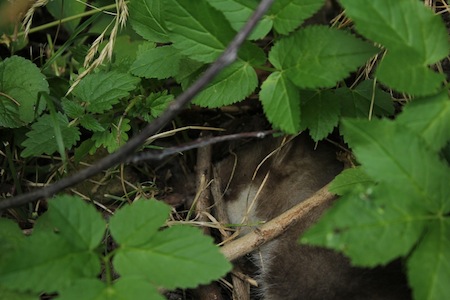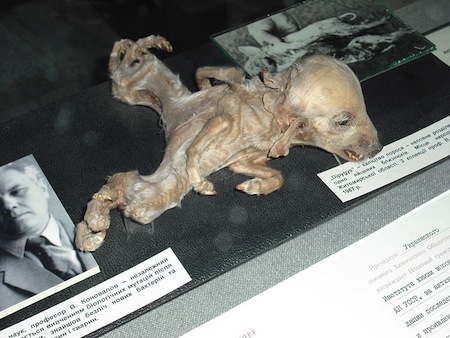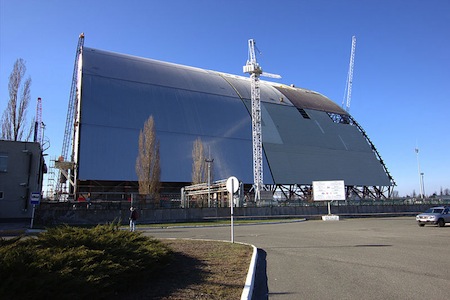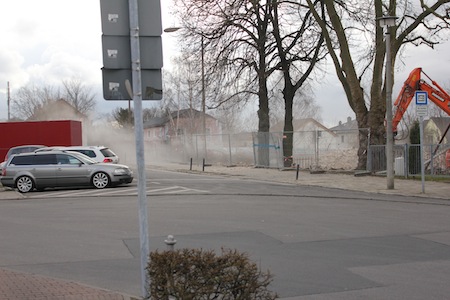Gesture Steered Turing Machines
Friday, July 1st, 2016A new astlab project, which comes closer to realize something which I have carried around in my head for now almost ten years.
randformblog on math, physics, art, and design |
A new astlab project, which comes closer to realize something which I have carried around in my head for now almost ten years.

Dead marten in our garden. Cause of death unknown. The head was unexplainably jammed by twigs (see image). The animal was already stiff when I found it. Could have been there at most for a day.
Here a comment about a specific problem in statistics which is often ignored by (mostly) non-mathematicians.
I originally intended to leave the comment in a mathematicians forum where this problem is discussed. As an example I looked at the glyphosate Renewal Assessment Report from 2013 where I think this ignorance leads to very problematic conclusions. Warning: some details about the animal test results are rather explicit.

image from Wikipedia by Vincent de Groot.
In the context of the last post about the WHO and the assessment of health problems due to radioactivity I wonder about one citation in the BBC report Falluja doctors report rise in birth defects. The BBC report was linked to from the Guardians WHO critique which I had mentioned in the last post.
According to the BBC report the citation was by “British-based Iraqi researcher Malik Hamdan:”
Ms Hamdan said that based on data from January this year, the rate of congenital heart defects was 95 per 1,000 births – 13 times the rate found in Europe.
Malik is a male name, so I guess this is a misprint and who is probably meant is Malak Hamdan.
Why did I wonder about that citation?

Image of the new safe confinement of April 2015 by Tim Porter, Wikimedia Commons
On the occasion of commemorating the Chernobyl disaster which happened then 25 years ago an interview with Dörte Siedentopf (a physician who has since 20 years been working in disaster relief programs for victims of the disaster and an antinuclear activist) had been published on Germanys major public news website. It was reposted today on the occasion of the 30th anniversary of the disaster. Amongst others Dörte Siedentopf drew my attention to a 1959 agreement between the IAEA and the WHO.
(more…)
 Ashes to ashes, dust to dust – remnants of the pub, as they are wafting over the railway tracks.
Ashes to ashes, dust to dust – remnants of the pub, as they are wafting over the railway tracks.
I am sorry to keep on talking about local politics. The pub from the last post has now been fully demolished. The little shops, which are adjacent to it are currently also under threat. A threat though of a slightly different sort.
With some help from Tim and on the occasion of the 2015 United Nations Climate Change Conference I did a visualization which combines local temperatures with methane data. The local temperatures are from the HADCRUT4 file, so they unfortunately stop in 2011. The methane data is from the website of the Earth System Research Lab. Unfortunately there are not so many methane measurements as there should be. In particular very few temperature stations have also made methane measurements, so I improvised a bit and joined some measurement points which are geographically close. The measurements are from Vestmannaeyar, Iceland; Alert Nunavut, Canada; Svalbard, Norway with temperatures from Lufthavn and CH4 from Ny Ålesund; Syowa, Antarctica and from Azores, Portugal, where the temperatures are from Santa Maria Island and the methane data is from Terceira Island (if I interpreted the station names correctly).
I have currently not so much Internet time left, partly because I currently have a job, where I have to sit a lot in front of a computer and partly because I have been trying to improve things in my local surroundings (partially as it seems in vain though) – so no long explanations. I hope you see at least what I see in the images above.
temperature curve: mean of anomalies (monthly deviations of values from monthly mean over measured time period, annual mean of that)
methane curve: annual mean of values
I am quite shocked to hear that two bloggers from the blog netzpolitik, namely the here already mentioned Markus Beckedahl and the blogger André Meister were accused of treason for reports and the publication of some apparently classified information related to projects connected with a project called after the greek Perseus. The projects have amongst others a component which deals with the mass surveillance of social networks by german intelligence. Treason is to be punished with at least one year in jail if I understood correctly. I briefly read the various reports at netzpolitik (for time reasons in a rather diagonally manner) and I found nothing which could remotely justify such charges in my point of view. That is the presentations there describe a rough organistorial setup in which rather unspecified general tasks, like coordinization, consulting etc. are mentioned. The documents and reports thus give a very sketchy outline about the rough size and – in particular- costs of the projects (which seems to be rather of interest to the tax payer), but nothing really concrete.
The investigation is currently suspended and I hope that the charges will be dropped.
Image from NOAA (public domain if I understood correctly)
Those who follow the randform posts closely know that Tim and me had worked on a visualization of a main collection of global temperature stations. It was used in a post on Azimuth – a blog which is mostly concerned with environmental topics and which is run by the mathematical physicist John Baez. In the post I reviewed the temperature data, which was used by the IPCC for their sofar published climate Assessment Reports up to AR4 in 2007. I left the conclusions about the investigated temperature records and their quality to the reader, but in the comment section I became a bit more “direct” and wrote:
Well every reader may judge him/herself by looking at the visualizations. If you want my opinion: I think this is rather catastrophic. In particular I wouldn’t wonder if the “global warming hiatus” is connected to the gaps.
The “global warming hiatus” or “global warming pause” is a finding that the global temperature rise has approximately paused since 1998 and hence by making this comment I questioned this “warming pause” or at least its shape. Unfortunately my suspicion has now been more or less confirmed. That is there global warming continues.
The article “Possible artifacts of data biases in the recent global surface warming hiatus” by Karl et al. Science 2015 0 (2015)” in the journal “Science” has unfortunately to be rented for the prize of 20$/day for reading (so I haven’t looked at it), but NOAA has a summary, where it is written:
“Adding in the last two years of global surface temperature data and other improvements in the quality of the observed record provide evidence that contradict the notion of a hiatus in recent global warming trends,” said Thomas R. Karl, L.H.D., Director, NOAA’s National Centers for Environmental Information. “Our new analysis suggests that the apparent hiatus may have been largely the result of limitations in past datasets, and that the rate of warming over the first 15 years of this century has, in fact, been as fast or faster than that seen over the last half of the 20th century.”
About the newly included datasets it is written:
New analyses with these data demonstrate that incomplete spatial coverage also led to underestimates of the true global temperature change previously reported in the 2013 IPCC report. The integration of dozens of data sets has improved spatial coverage over many areas, including the Arctic, where temperatures have been rapidly increasing in recent decades. For example, the release of the International Surface Temperature Initiative databank, integrated with NOAA’s Global Historical Climatology Network-Daily dataset and forty additional historical data sources, has more than doubled the number of weather stations available for analysis.
I mentioned the International Surface Temperature Initiative (ISTI) in the Azimuth blogpost together with a citation from their blog:
The ISTI dataset is not quality controlled, so, after re-reading section 3.3 of Lawrimore et al 2011, I implemented an extremely simple quality control scheme, MADQC.
which doesn’t sound too great, if it comes to quality assessment.
But still: I suspect that the new temperature curves of that article match the real temperatures to a much better degree than the ones which were used for the IPCC reports until 2013.
It is though unfortunate that these new temperatures are not available, because I still have that suspicion that the role of methane in that warming trend is greatly underestimated and I still think it IS ULTIMATELY URGENT to investigate that suspicion. The exact shape of the curve would be rather important, because amongst others there was also a “hiatus” in the rise of methane and I think you can see that short pause in the above image.
Methane may however play eventually also a role in a way more dramatic environmental context. In my point of view that context should also be investigated URGENTLY, but it seems the view of methane is viewed controversely among climate scientists, at least Gavin Schmidt of the NASA’s Goddard Institute for Space Studies blurrily expressed anti-alarmistic words in an interview with John H. Richardson from Esquire (Esquire link via John Baez) by saying that:
“The methane thing is actually something I work on a lot, and most of the headlines are crap. There’s no actual evidence that anything dramatically different is going on in the Arctic, other than the fact that it’s melting pretty much everywhere.”